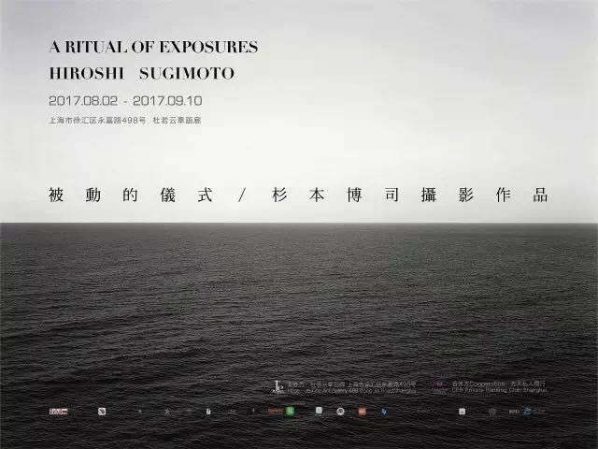
A RITUAL OF EXPOSURES
Translated by Xin
Proofread by Santino
Time, History and Universe; Nature, Life and Death –all of which are “rituals” performed by the Zeist. Hiroshi Sugimoto, with his cameras, has dedicated four decades of life, scattering his traces across the world and recording these “rituals” in the universe. His solo exhibition A Ritual of Exposures in the Je Fine Art Gallery showcases his most important photo series across time and space, including Seascapes, Theatres, Dioramas, Polarised Colours, Pots and Stylised Sculptures. In these series, his persistently black-and-white monochromes preserve the eternal horizon; the still theatre images retain the passing of time; the vivid animal scenes narrate the paradox of death; and the civilisation created by humans becomes a fleeting glance into the History.
Hiroshi Sugimoto's rituals is a series of exposures, untampered and driven by a higher spirit.
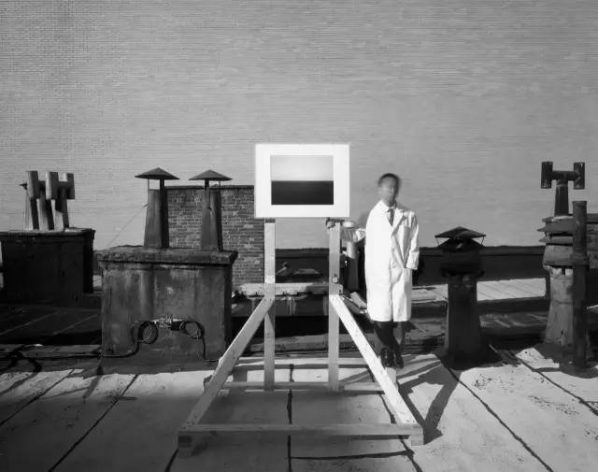
Hiroshi Sugimoto
▼
In his works, to live is to experience a ritual…
of light exposed, often mistakenly taken as the sign of hope but sometimes too dazzling for the eye to see;
of sea exposed, unavoidably tempestuous but still charms many with her fleeting caprice;
of a diorama exposed, however alive and kicking once, now a lifeless piece;
of a pot exposed, once handled and touched, now enclosed in the exhibition cabinet;
of a film exposed, when over, has her last audience too loyal to leave
...
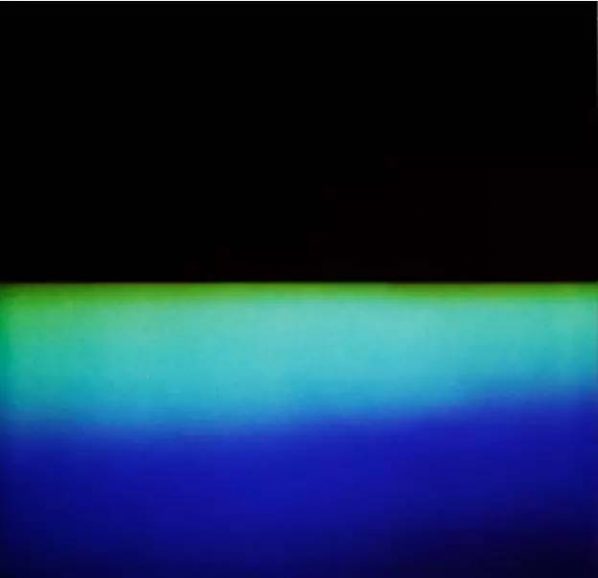
Polarized Colors #037 | 2010
Sugimoto is an observer, an interpreter and a philosopher of this ritual of exposures. He fears the fleetingness of these moments.
In a time when many look to the future, he looks back in time. He looks for inspirations in the past, searching for the traces of history because for him a retreat could be another advance.
His works are negotiations between destruction and survival, between life and death. He understands that photography, although deemed to be a faithful recorder of reality, has the power to deceive the eye and to coat the frailty. “Civilisation” is a powerful word of human invention, but it will eventually cease to exist under the last judgement of Time.
Hiroshi Sugimoto, a famous Japanese photographer, was born in Tokyo in 1948, not long after the war. A birth after countless deaths.
Many buildings fell into pieces but his father´s house remained. A survival among utter ruins.
He studied Western philosophy and Marxist Economics in Tokyo but was immersed in the Oriental philosophy of Zen and Buddhism when he moved to California. An outsider from within.
He was in New York during 9/11 and therefore witnessed the collapse of World Trade Centre. A destruction during the boom.
The 60s saw the end of Pop Art Movement but the eruption of various new movements. In this environment, rising artists were lost and confused.Struggles in a melting pot.
Luckily, he arose above the mundane to the metaphysical, exposing Time, History and Universe; Nature, Life and Death with his camera. In a secular world, his sensibility turned his art of photography into a ritual of exposure, untampered and driven by a higher spirit.
The Practitioner of the Ritual
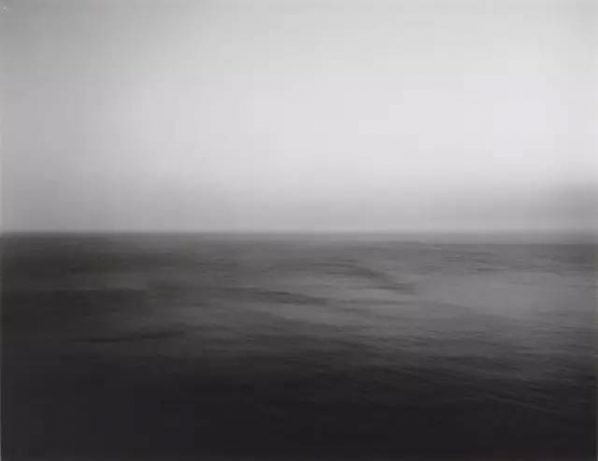
Time Exposed #305, Sea of Japan, Hokkaido, 1986
▼
- Seascapes -
Sugimoto´s work is not only a photograph but also an art which witnesses and reflects on time and life. Seascape series is an ongoing ritual performed by Sugimoto over a time span of twenty years. Places shift and time elapses but the horizon stays in his seascapes.
He said, “It is becoming my lifelong career. My interest in seascape sprang from my childhood memories. The very first memory I have is a seascape.”
People always try to forget certain memories. Some do fade with time but others stay fresh as a daisy. “Memories are beyond control – you might not remember what happened yesterday but you could easily recall moments from childhood.” Therefore, when we look at Sugimoto´s seascapes, regardless of age, we are overflowed with ungoverned emotions which could be traced back to the Genesis. Has the sea even changed since the time of the first people?
The Ritual of Revivals
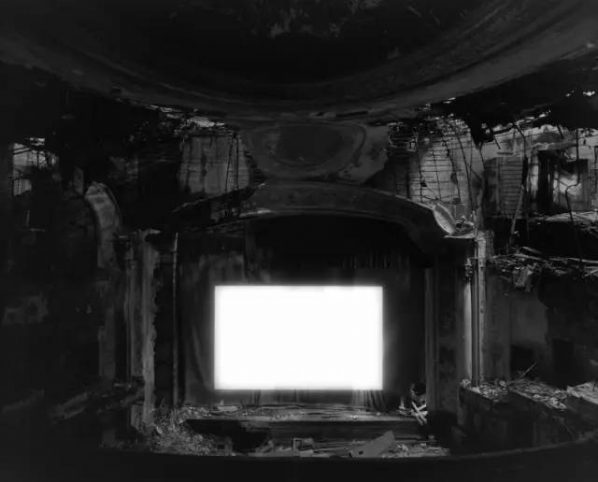
Paramount Theater, Newark | 2015
▼
- Theatres -
He lingers in the abandoned theatres, fixes the shutter open and only closes it when the film ends. Thus, the camera becomes the witness of time. A narrative in a single frame – such an affecting narrative but its carrier abandoned.
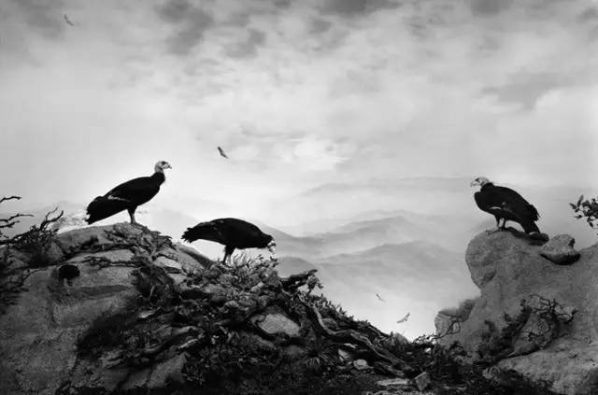
California Condor | 2012
- Dioramas -
He said, “To make these dioramas, many photographers have been sent to the spot. And then came back here. Then the three-dimensional dioramas were made.” The dioramas are exhibited in the museums, to be looked at and to be photographed. Interestingly, the man-made mounts seem so real in his pictures. He camped in the museum, spending hours shooting. The lifeless animals were revived to life by him – their eyes not hollow anymore but seemingly alarmed as if just encountered by the photographer.

Church of Light | 2009
- Architecture -
Despite an architect, he said, “buildings are the graves of architecture.” Once started, the project drifts away from the prototype in compromised forms. The immortal buildings, when covered in fog and transformed into phantoms, come the closest to their inceptions.
“Although cameras leave traces of light in material forms, they have no memory.”
▼
Sugimoto’s photographs are light-exposed and his vision is time and history-exposed.
His photographs are pieces of art.
His photography is a ritual, a perennial one and each one of us is enthralled by his ritual of exposing what is metaphysical.
About the exhibition
Dates: 2017.08.02 – 2017.09.10
Venue: Je Fine Art Gallery
Courtesy of the artist and Je Fine Gallery.




























